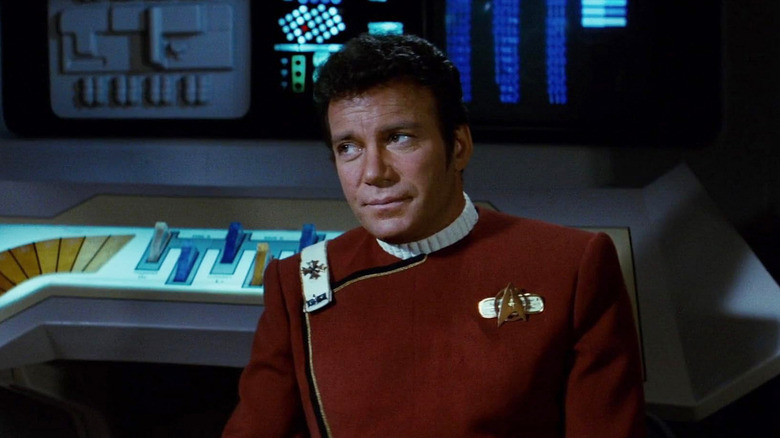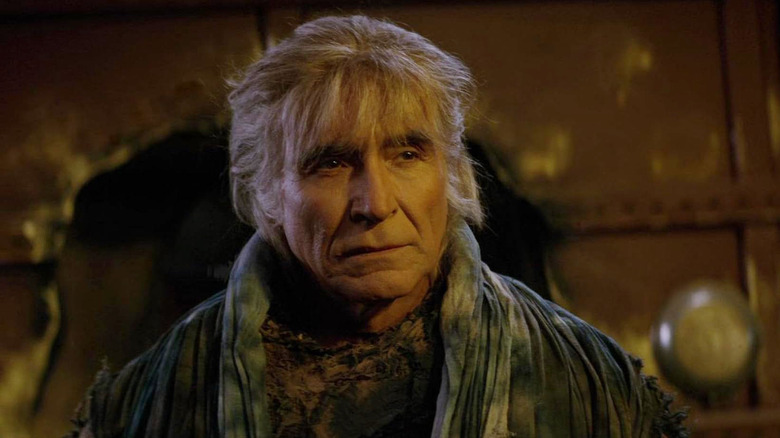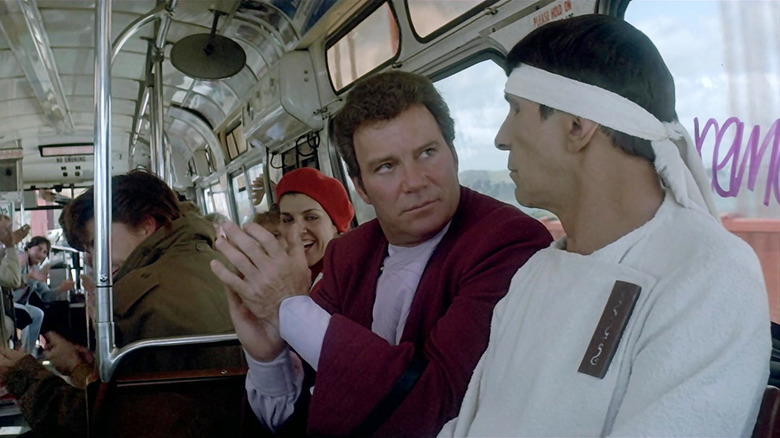Of the 13 extant “Star Trek” characteristic movies, it is extensively agreed that Nicholas Meyer’s 1982 sequel “Star Trek II: The Wrath of Khan” is one of the best one. Many Trekkies just like the outsize character of Khan and Ricardo Montalbán’s equally enlarged efficiency, in addition to the movie’s thrilling, climactic ship-to-ship fight sequence. To remind readers, “Khan” climaxes when the eponymous character hijacks a Starfleet vessel referred to as the united statesS. Reliant and makes use of it to struggle Admiral Kirk (William Shatner), who’s aboard the united statesS. Enterprise. Kirk, you see, had left Khan behind on the planet Ceti Alpha V within the unique sequence episode “House Seed,” unaware that an environmental cataclysm had turned the complete planet right into a desert wasteland. Khan barely survived, and when he lastly escaped Ceti Alpha V, he thought solely of revenge.
“The Wrath of Khan,” which includes a story credited to Harve Bennett and Jack B. Sowards (who’s additionally credited for writing the script), offers thematically with dealing with penalties. Kirk has beforehand been a forthright however reckless captain who not often handled the fallout of his actions. “The Wrath of Khan” not solely has him dealing with a forgotten foe, but in addition studying he had an grownup son (Merritt Butrick) whom he has by no means met. It is all about rising up and re-evaluating one’s life. Then, on the finish, Spock (Leonard Nimoy) dies, exhibiting that there’ll all the time be penalties. Youth won’t final without end, and one can by no means outrun their previous.
Bennett wasn’t only a story author on “The Wrath of Khan,” but in addition a “Star Trek” producer who was introduced into the franchise in 1980 after the monetary disappointment of “Star Trek: The Movement Image.” He would keep on to provide a number of extra movies within the franchise after that.
In 2010, Bennett was being interviewed by StarTrek.com when, naturally, he was requested which of his “Star Trek” films he favored one of the best. Maybe naturally, he mentioned it was “The Wrath of Khan.”
Harve Bennett favored The Wrath of Khan one of the best
It is value noting that Leonard Nimoy’s 1986 movie “Star Trek IV: The Voyage House” was, by a large margin, essentially the most financially profitable “Star Trek” film, not less than till the discharge of J.J. Abrams’ “Star Trek” in 2009. Bennett, a producer, was immediately tempted to name “Voyage House” his favourite merely for that motive. However then, after a second’s thought, he needed to admit that he, together with many of the world’s Trekkies, most popular “Wrath of Khan.” In his personal phrases:
“My intuition is to say, ‘You wager, IV is my favourite,’ however then I’ve to cease and say that I really like ‘IV,’ however ‘II’ will all the time have a particular place in my coronary heart for the explanations we mentioned and extra.”
Bennett wasn’t a Trekkie when he was employed to work on “The Wrath of Khan,” and had to return and watch each episode of the unique sequence to organize. The episode “House Seed,” he defined within the StarTrek.com interview, spoke to him and left him questioning what Khan would appear like 25 years after these occasions. Curiously, it took a non-Trekkie to create the story for one of the crucial beloved “Star Trek” films ever.
However then, Bennett had extra to say about “The Voyage House,” because it too had a novel idea. That’s the movie whereby the Enterprise crew, having hijacked a Klingon ship they re-Christened the Bounty in “Star Trek III: The Seek for Spock,” travels again in time to the 12 months 1986 to retrieve a pair of humpback whales. It appears a mysterious, omnipotent house probe again sooner or later is emptying Earth’s oceans searching for a number of humpback whales, and the planet is screw since humanity hunted whales to extinction centuries earlier. Bennett additionally favored that film, as did most filmgoers.
Bennett nonetheless loved The Voyage House, although
As famous above, “Star Trek: The Movement Image” was a business disappointment, so a brand new inventive workforce (sans “Star Trek” creator Gene Roddenberry) was introduced on for the sequels. Bennett, a beginner, struck gold along with his “Wrath of Khan” concept, but it surely was one thing of a danger on the time. If “Wrath of Khan” had flopped, it may’ve been the ultimate “Star Trek” movie. Fortunately, each that film and “The Seek for Spock” did effectively, and, in Bennett’s phrases, “By the point we bought to ‘IV’ we have been assured.” Bennett felt that the movie’s time journey plot was a good way to attraction to a broader viewers past Trekkies.
It labored. Bennett liked the movie, and liked that everybody noticed it. “Wrath of Khan” could have been his favourite, however “Voyage House” bought extra verbiage from the producer. As he put it:
“Going again to the current created one thing that nothing else may have carried out, which is it offered ‘Star Trek’ to a non-‘Trek’ viewers. All it’s a must to do is bear in mind these scenes within the San Francisco streets. Individuals did not relate to the characters as ‘Star Trek’ stars, however sort of as one other San Francisco loopy. I am keen on the girl reacting to Chekov when he asks her ‘The place can I discover the nuclear wessels? ‘That complete scene offered ‘Star Trek’ contemporaneously to individuals who’d by no means heard of it. That is why it was the largest hit and in some ways the most well-liked of those I did.”
The “nuclear wessels” reference comes from Chekov (Walter Koenig) in search of nuclear energy for his spacecraft, however having no concept as to the place he can get it. He is aware of nuclear-powered seacraft have what he wants, however he would not know the place they’re. So, he merely begins asking individuals passing by (together with an additional who solely bought the half as a result of the movie’s manufacturing had towed her automotive), in a Russian accent, the place he would possibly discover “nuclear wessels.” In 1986, through the Chilly Conflict, this was notably humorous.


